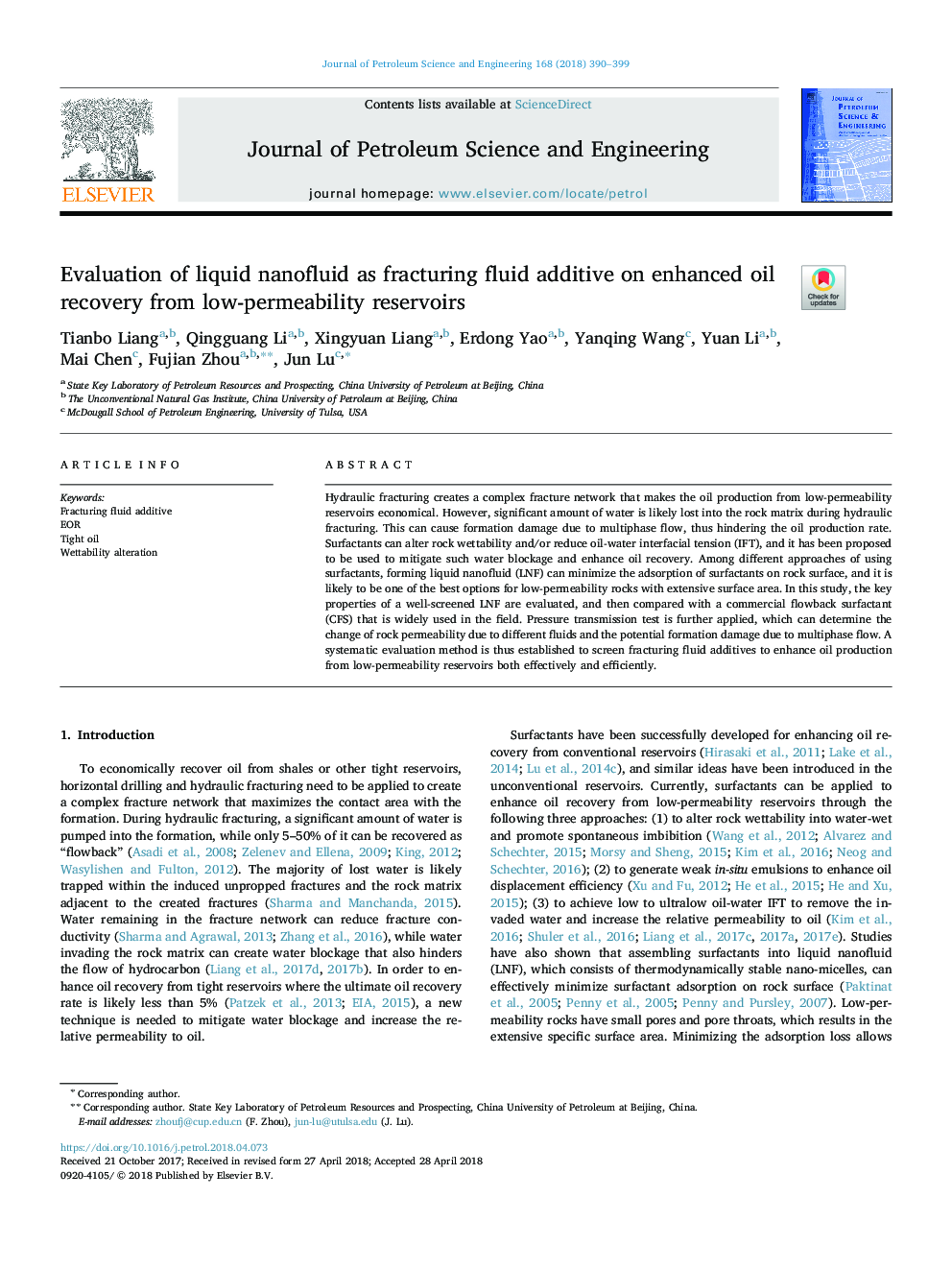| Article ID | Journal | Published Year | Pages | File Type |
|---|---|---|---|---|
| 8124728 | Journal of Petroleum Science and Engineering | 2018 | 10 Pages |
Abstract
Hydraulic fracturing creates a complex fracture network that makes the oil production from low-permeability reservoirs economical. However, significant amount of water is likely lost into the rock matrix during hydraulic fracturing. This can cause formation damage due to multiphase flow, thus hindering the oil production rate. Surfactants can alter rock wettability and/or reduce oil-water interfacial tension (IFT), and it has been proposed to be used to mitigate such water blockage and enhance oil recovery. Among different approaches of using surfactants, forming liquid nanofluid (LNF) can minimize the adsorption of surfactants on rock surface, and it is likely to be one of the best options for low-permeability rocks with extensive surface area. In this study, the key properties of a well-screened LNF are evaluated, and then compared with a commercial flowback surfactant (CFS) that is widely used in the field. Pressure transmission test is further applied, which can determine the change of rock permeability due to different fluids and the potential formation damage due to multiphase flow. A systematic evaluation method is thus established to screen fracturing fluid additives to enhance oil production from low-permeability reservoirs both effectively and efficiently.
Keywords
Related Topics
Physical Sciences and Engineering
Earth and Planetary Sciences
Economic Geology
Authors
Tianbo Liang, Qingguang Li, Xingyuan Liang, Erdong Yao, Yanqing Wang, Yuan Li, Mai Chen, Fujian Zhou, Jun Lu,
